How to Choose the Right Air Conditioner for Your Camper Van
When selecting the best air conditioner for your camper van, it’s essential to consider factors that ensure efficient cooling, durability, and ease of use. Below is a detailed guide to help you make an informed decision.
Cooling Capacity (BTU)
Cooling capacity, measured in British Thermal Units (BTU), determines how effectively an air conditioner can cool your camper van. Larger camper vans require higher BTUs for optimal cooling, while smaller ones can suffice with lower BTU units.
- Small Camper Vans (Less than 150 sq. ft.): Units with 5,000–8,000 BTUs work well.
- Medium Camper Vans (150–300 sq. ft.): Opt for 10,000–12,000 BTU models.
- Large Camper Vans (300+ sq. ft.): Consider 14,000+ BTU options for maximum cooling efficiency.
Key Tip: Always match the BTU rating with the van’s insulation quality. A well-insulated van may require a slightly lower BTU unit, saving energy.
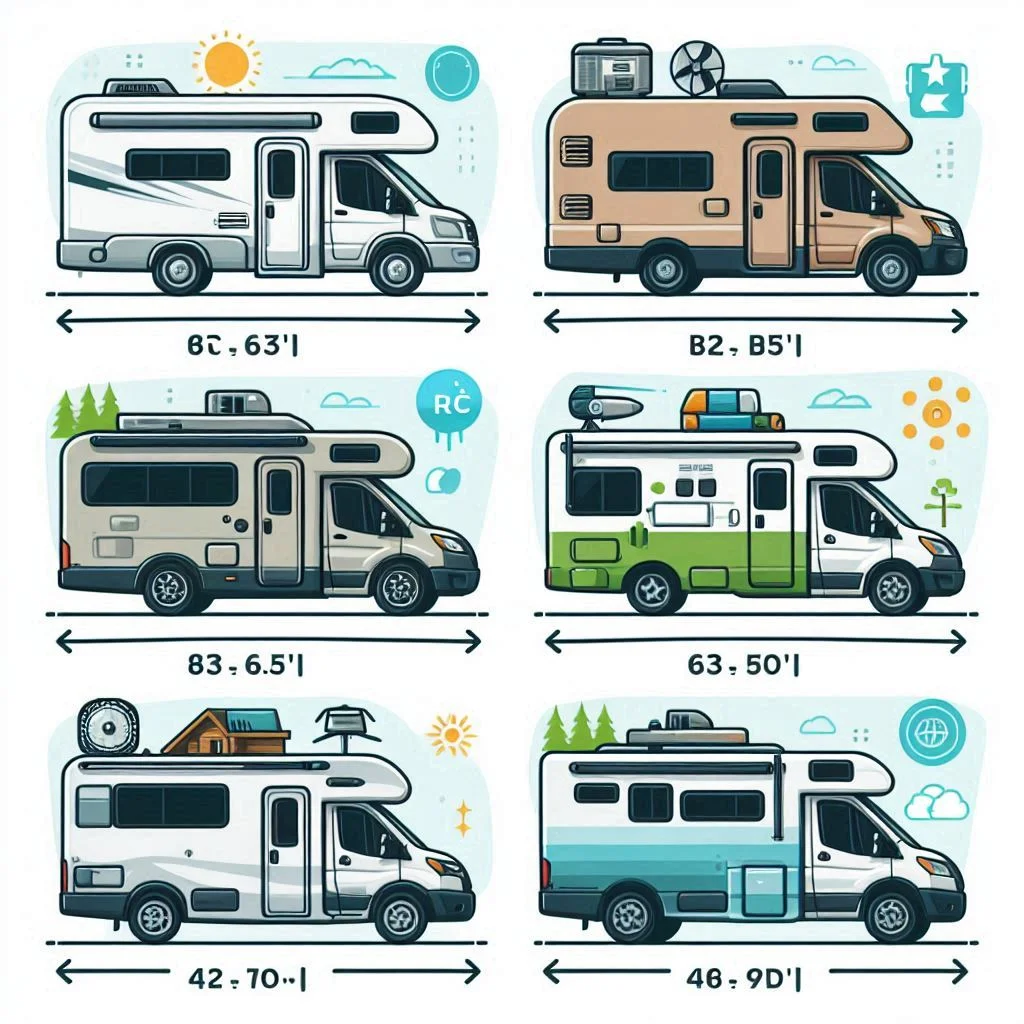
Efficiency and Power Consumption
Energy efficiency directly affects your camper van’s power usage. Look for models with high Energy Efficiency Ratio (EER) or Seasonal Energy Efficiency Ratio (SEER) ratings. Efficient units consume less power and save costs in the long run.
- Solar Power Compatibility: Choose air conditioners that work well with solar panels or low-power setups.
- Energy-Saving Modes: Many portable units come with eco-friendly modes that automatically adjust cooling levels to conserve energy.
Pro Tip: Compare power consumption (watts) in various models to ensure compatibility with your battery or power setup.
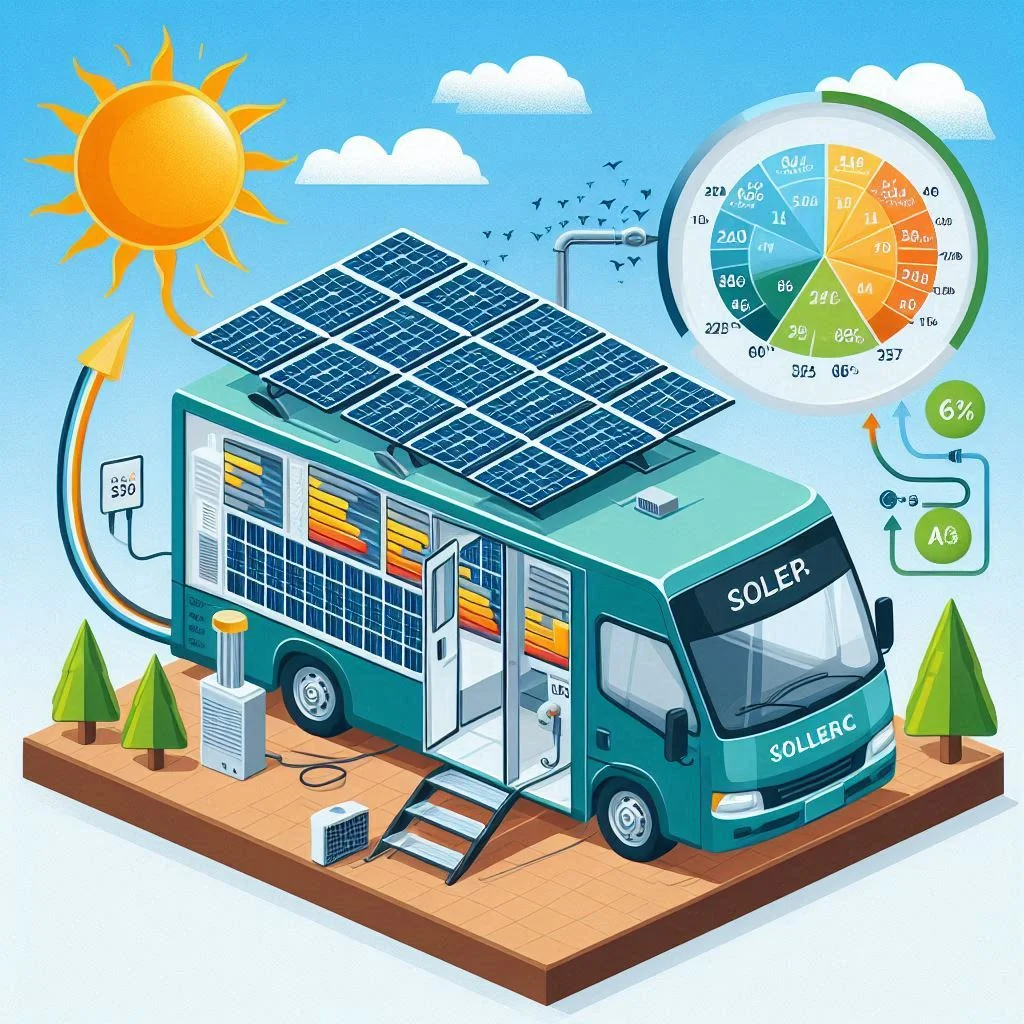
Noise Levels
Noise is a crucial factor, especially for light sleepers or those seeking a peaceful camping experience. Portable air conditioners typically produce noise in the range of 50–60 decibels (dB).
- Quiet Models: Opt for units designed with advanced sound-dampening features. Models under 55 dB are ideal for nighttime use.
- Fan Speed Impact: Higher fan speeds can increase noise; choose a model that balances performance and quiet operation.
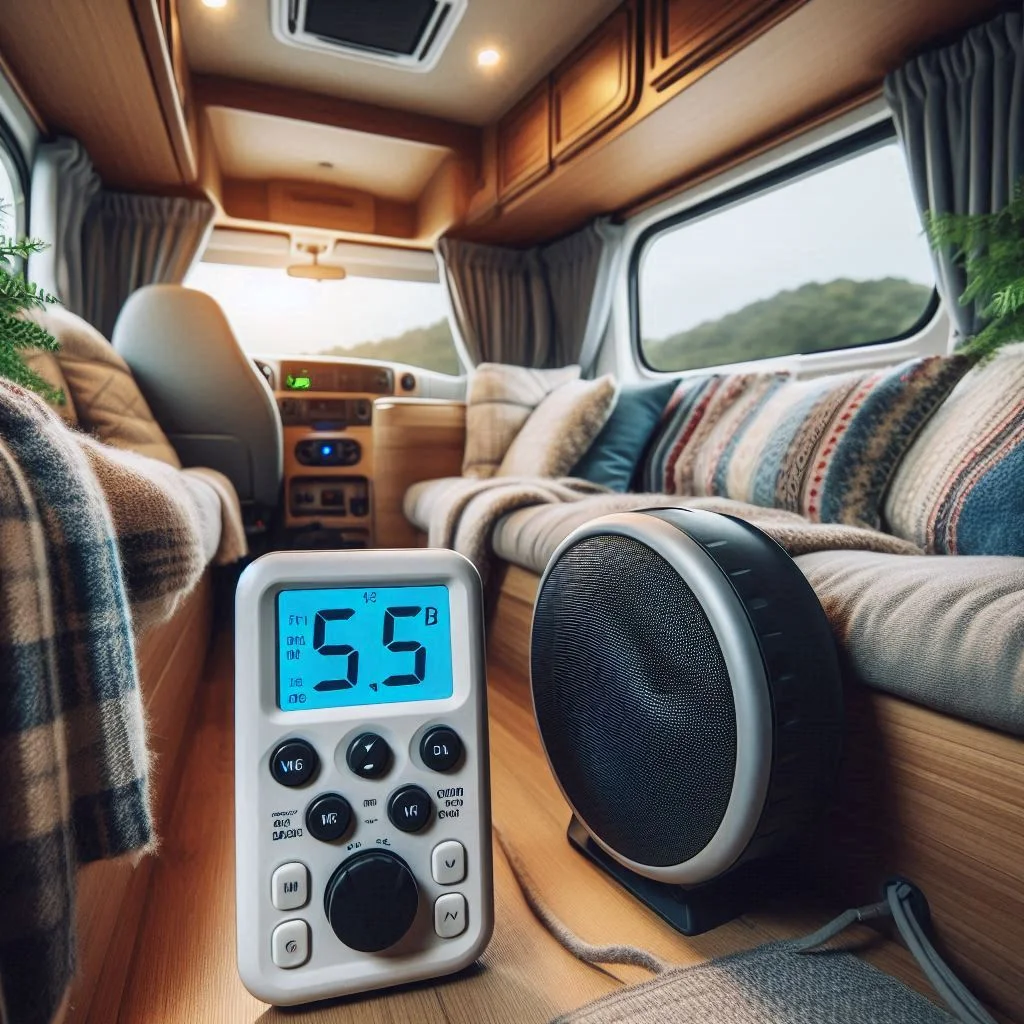
Durability and Design
Durability is essential, as camper vans often face varying conditions. Choose air conditioners built with robust materials to withstand heat, humidity, and occasional vibrations during travel.
- Materials: Rust-resistant and heat-resistant designs last longer.
- Design Features: Compact, lightweight units are easier to store and move within a camper van.
Pro Tip: Look for air conditioners with reinforced components like sealed compressors to prevent damage during bumpy rides.
Ease of Installation
A portable air conditioner should be simple to install and relocate. Consider the following aspects for hassle-free setup:
- Window Kits: Models with adjustable window kits make installation easier.
- Drainage Systems: Look for self-evaporative systems to reduce the need for manual draining.
- Plug-and-Play Options: Units requiring minimal setup save time and effort.
Key Tip: Check the size and flexibility of the exhaust hose, as shorter and more adaptable hoses ensure better fit and performance.
Types of Camper Van Air Conditioners
Choosing the right type of air conditioner for your camper van is essential for maintaining comfort and efficiency. This section provides a detailed breakdown of the different types of air conditioners, helping you decide which one best suits your camper van and lifestyle.
Portable Air Conditioners
Portable air conditioners are a versatile and budget-friendly cooling option for camper vans. They are freestanding units that require minimal installation and can be moved around as needed.
- Advantages:
- Easy to install with no permanent modifications required.
- Compact and lightweight, making them perfect for small camper vans.
- Dual-function models offer cooling and dehumidification.
- Considerations:
- Requires an exhaust hose to vent hot air outside.
- May occupy floor space, which is limited in camper vans.
Use Case: Portable air conditioners are ideal for campers who need a flexible, cost-effective cooling solution without committing to permanent installations.
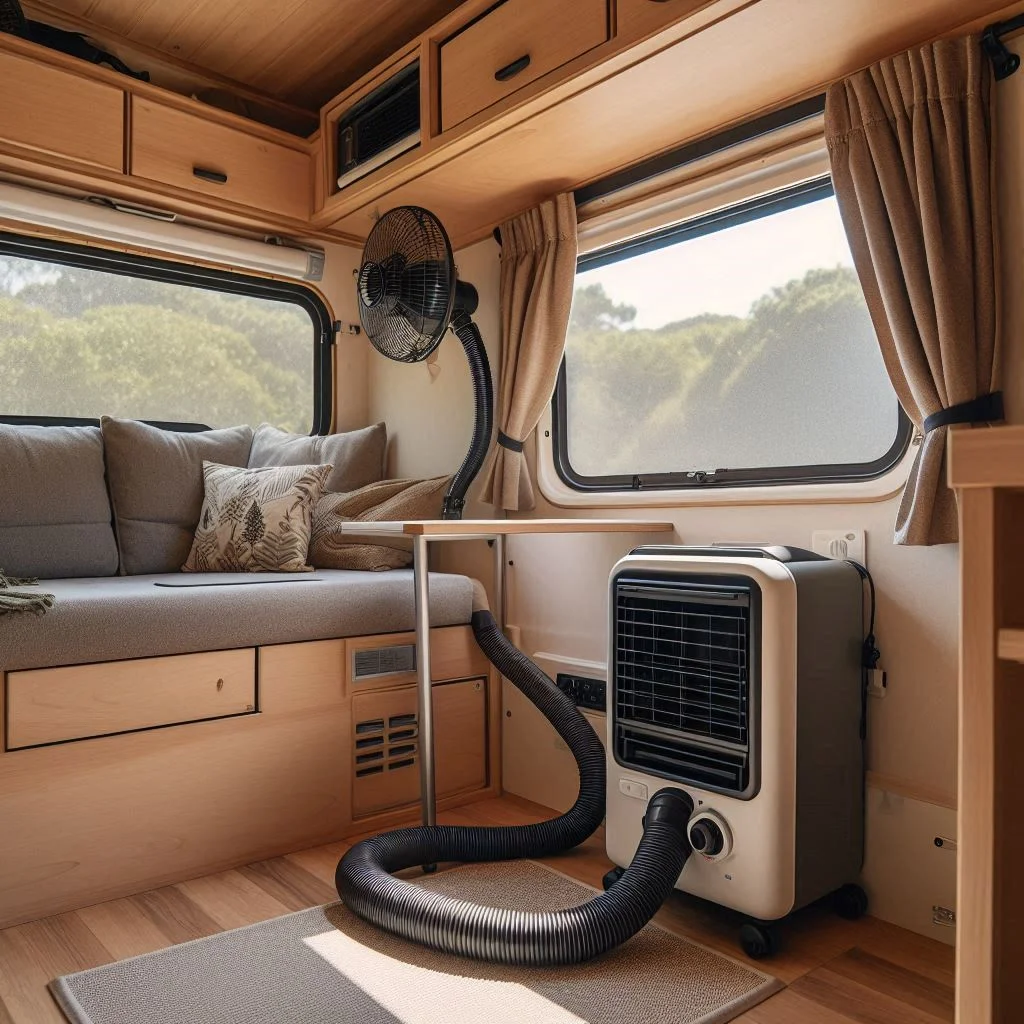
Rooftop Air Conditioners
Rooftop air conditioners are mounted on the roof of your camper van, providing efficient cooling without taking up valuable interior space. These units are commonly found in mid-to-large-sized camper vans.
- Advantages:
- Saves interior space by utilizing roof-mounted installation.
- Offers powerful cooling, suitable for larger camper vans.
- Some models include heating capabilities for year-round comfort.
- Considerations:
- Requires professional installation, which can be costly.
- Adds weight and height to the camper van, potentially affecting aerodynamics.
Use Case: Rooftop air conditioners are best for long-term travelers who prioritize powerful cooling and have sufficient roof space for installation.
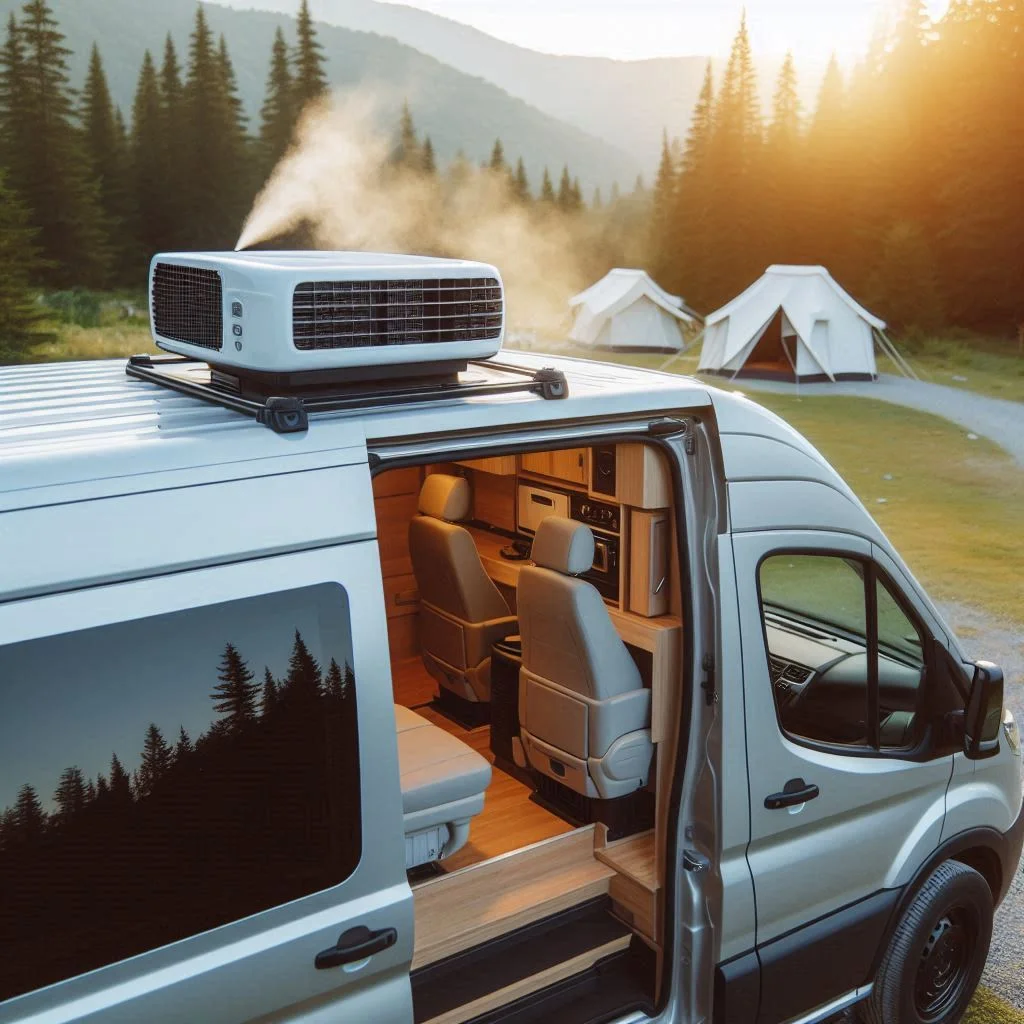
Non-Ducted vs. Ducted Systems
Air conditioning systems can be classified into non-ducted and ducted setups, each with distinct benefits and limitations.
Non-Ducted Systems
Non-ducted systems distribute air directly from the air conditioner unit, making them straightforward and cost-effective.
- Advantages:
- Easy to install with no complex ductwork.
- Affordable and requires minimal maintenance.
- Ideal for small to medium-sized camper vans.
- Limitations:
- Cooling may be uneven in larger vans due to lack of air circulation.
Ducted Systems
Ducted systems use a network of ducts to distribute cooled air evenly throughout the camper van.
- Advantages:
- Provides consistent cooling across all areas.
- Aesthetic and space-saving, with ducts concealed in walls or ceilings.
- Ideal for large or luxury camper vans.
- Limitations:
- Higher installation costs due to the complexity of ductwork.
- Requires significant space for ducts, which may not be feasible in smaller vans.
Use Case: Non-ducted systems are suitable for budget-conscious travelers with smaller camper vans, while ducted systems work best for those with larger vans seeking uniform cooling.
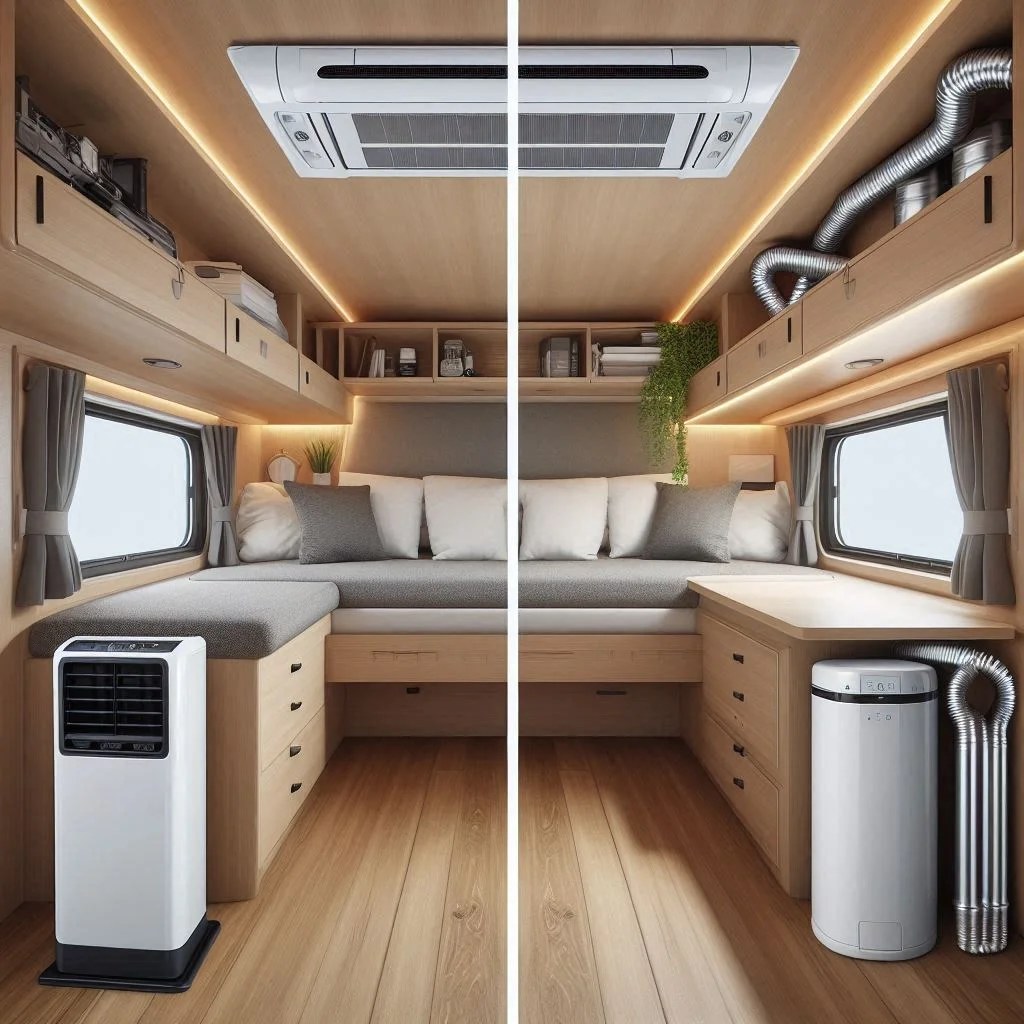
Top Portable Air Conditioners for Camper Vans
Finding the right portable air conditioner for your camper van is crucial for staying cool and comfortable on the road. Below are the top-rated models, their standout features, and why they’re ideal for camper vans.
Whynter Elite ARC-122DS
The Whynter Elite ARC-122DS is a dual-hose portable air conditioner designed for efficiency and performance.
- Key Features:
- Cooling Capacity: 12,000 BTU, perfect for medium-sized camper vans.
- Dual Hose System: Allows faster cooling and prevents negative pressure.
- Energy Efficiency: Comes with an auto-drain feature and eco-friendly refrigerant.
- Dehumidifier Mode: Removes up to 76 pints of moisture daily.
- Why It’s Great for Camper Vans:
- Compact design fits easily in limited spaces.
- Quiet operation with a noise level of under 52 dB.
- Includes a programmable timer for energy-saving operation.
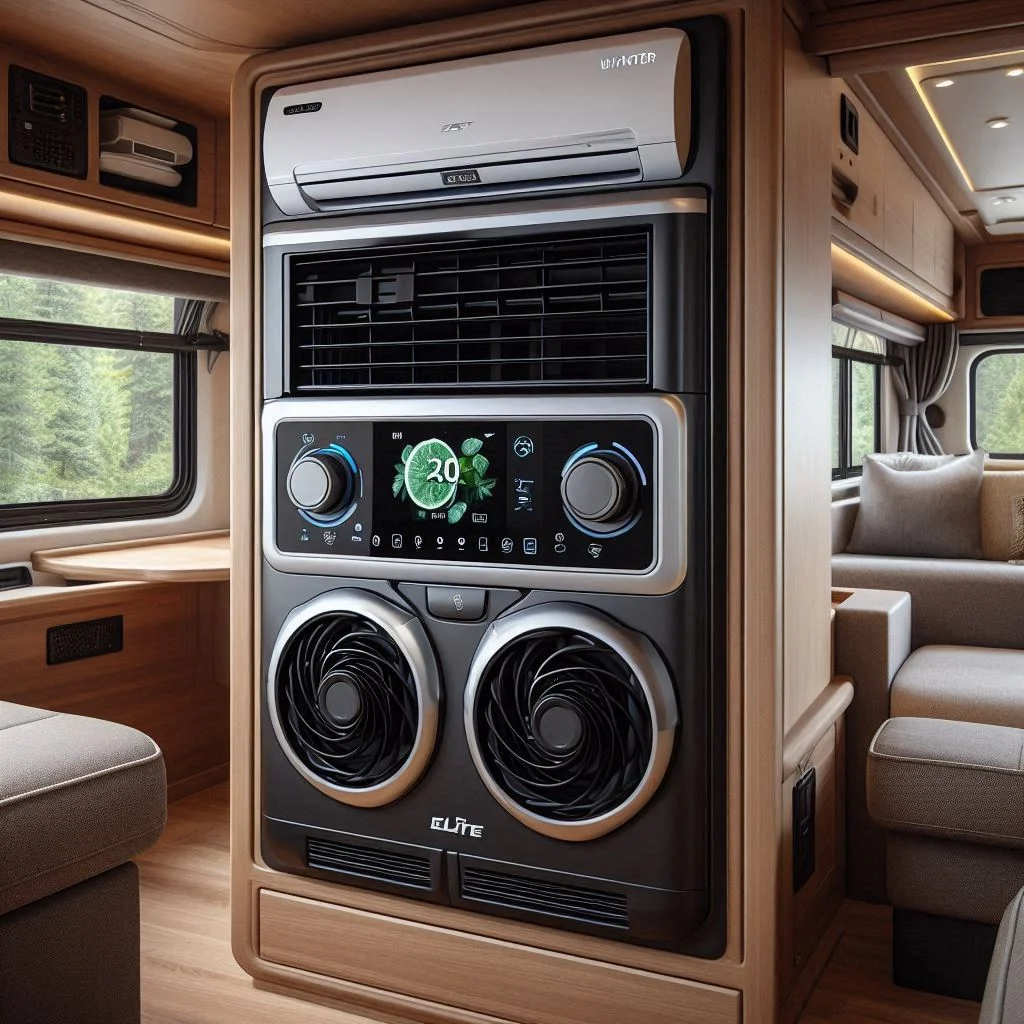
LG LP0621WSR
The LG LP0621WSR is a budget-friendly option with reliable cooling performance.
- Key Features:
- Cooling Capacity: 6,000 BTU, ideal for small camper vans.
- Portability: Equipped with easy-roll caster wheels for movement.
- Digital Display: Features user-friendly controls for precise temperature adjustment.
- Low Noise: Operates at a quiet 53 dB.
- Why It’s Great for Camper Vans:
- Lightweight and easy to store when not in use.
- Energy-efficient design reduces power consumption, making it solar-friendly.
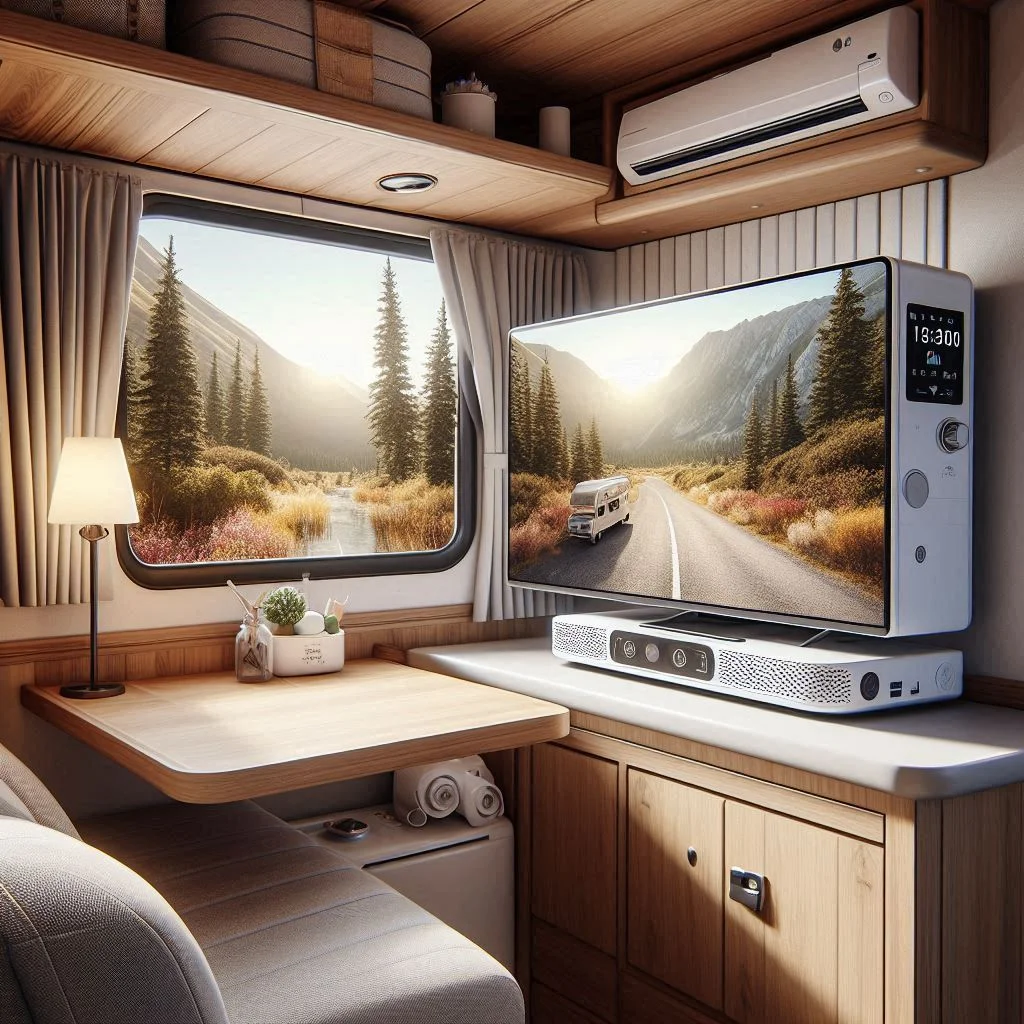
Homelabs Portable Air Conditioner
The Homelabs Portable Air Conditioner is a powerful and versatile cooling solution for camper van owners.
- Key Features:
- Cooling Capacity: 10,000 BTU, suitable for medium to large camper vans.
- Multifunctionality: Offers cooling, fan-only, and dehumidification modes.
- Smart Control: Comes with remote control and programmable settings.
- Compact Design: Includes an easy-to-install window kit.
- Why It’s Great for Camper Vans:
- Quick setup with an adjustable venting hose.
- Efficient cooling without occupying too much floor space.
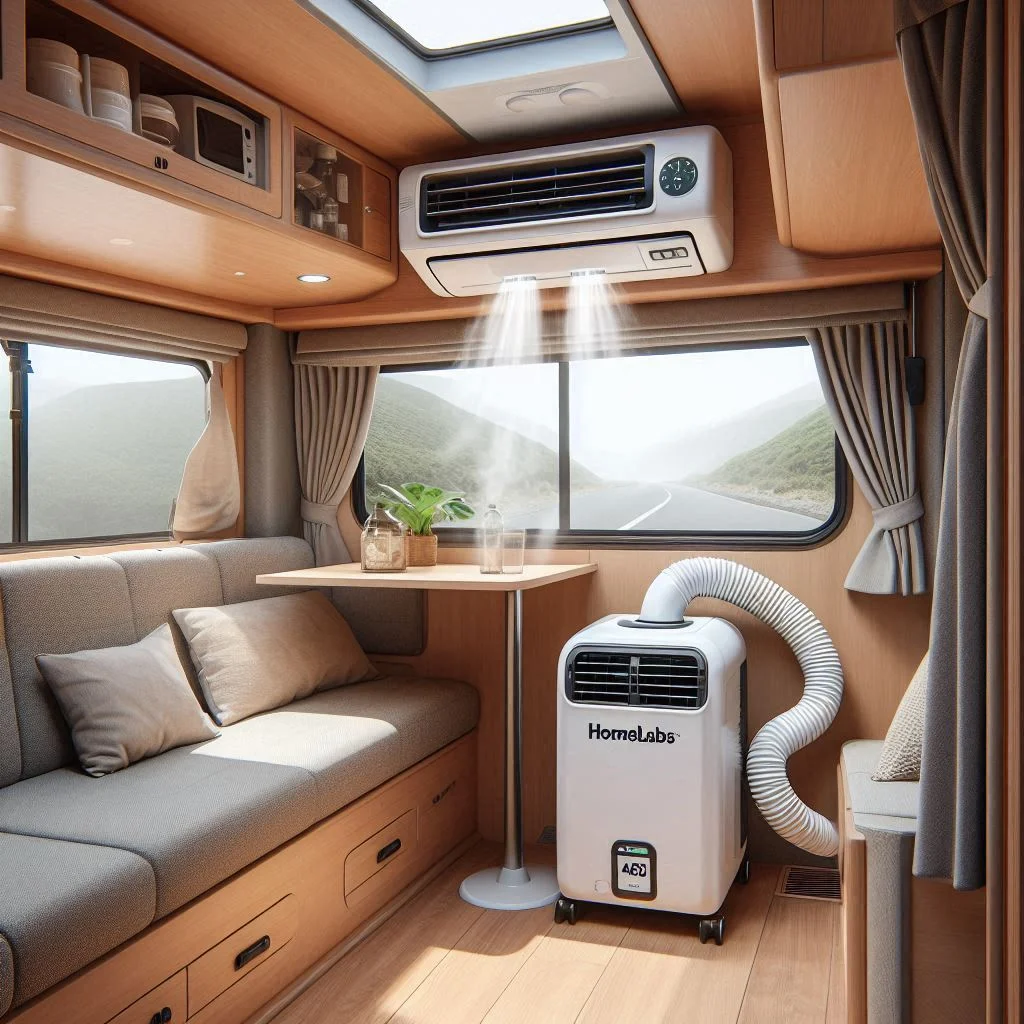
De’Longhi Pinguino PACEX390LVYN
The De’Longhi Pinguino PACEX390LVYN is known for its premium features and energy efficiency.
- Key Features:
- Cooling Capacity: 14,000 BTU, ideal for larger camper vans or extreme heat.
- Whisper-Quiet Operation: Features noise reduction technology.
- Eco-Friendly: Uses R32 refrigerant with lower environmental impact.
- Remote Control: Allows easy adjustment of settings from a distance.
- Why It’s Great for Camper Vans:
- Suitable for extreme climates, providing consistent cooling.
- Energy-saving mode minimizes power usage during long trips.
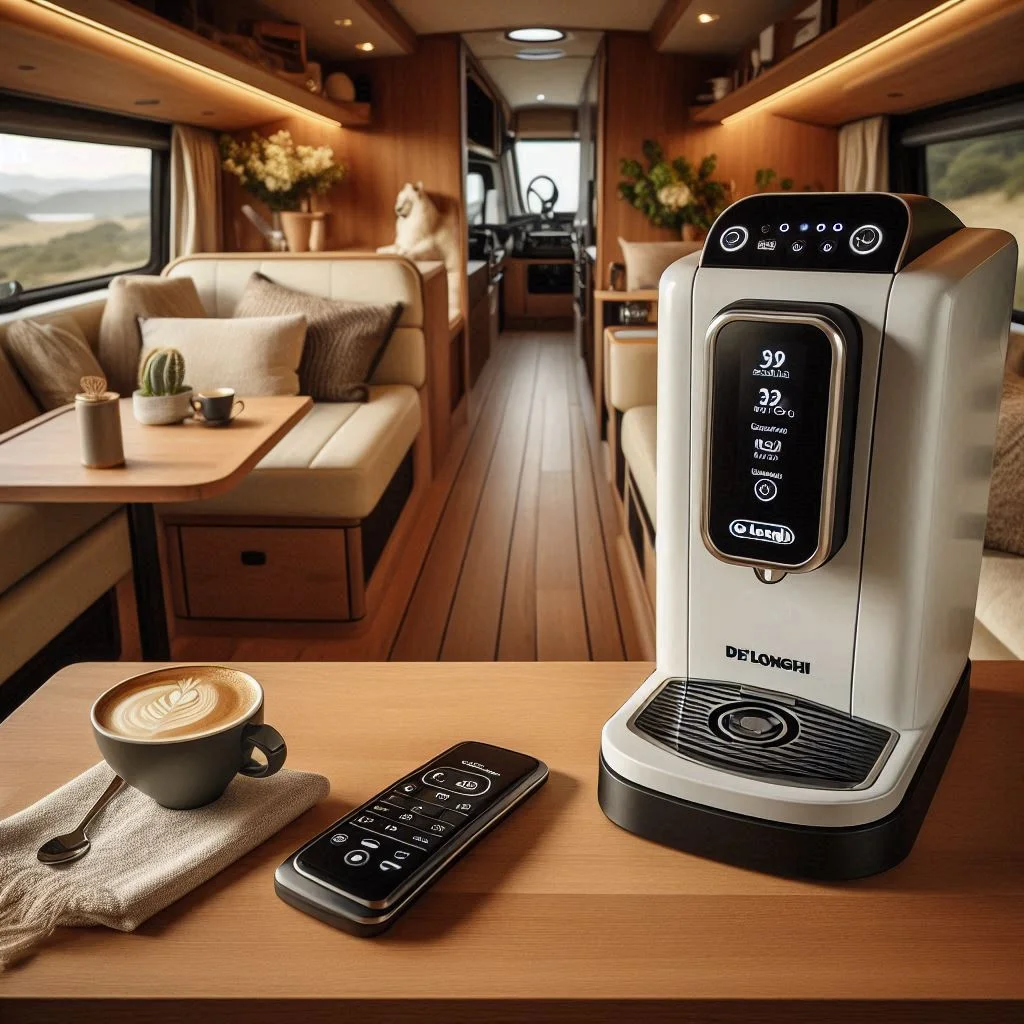
Midea MAP08R1CWT
The Midea MAP08R1CWT combines affordability and reliability, making it a popular choice for camper van owners.
- Key Features:
- Cooling Capacity: 8,000 BTU, perfect for small to medium camper vans.
- Lightweight Design: Weighs only 53 pounds, easy to transport.
- Quiet Operation: Produces minimal noise during operation.
- Smart Control: Compatible with Alexa and Google Assistant for voice commands.
- Why It’s Great for Camper Vans:
- Smart home integration makes it convenient for tech-savvy users.
- Compact size fits seamlessly in limited spaces.
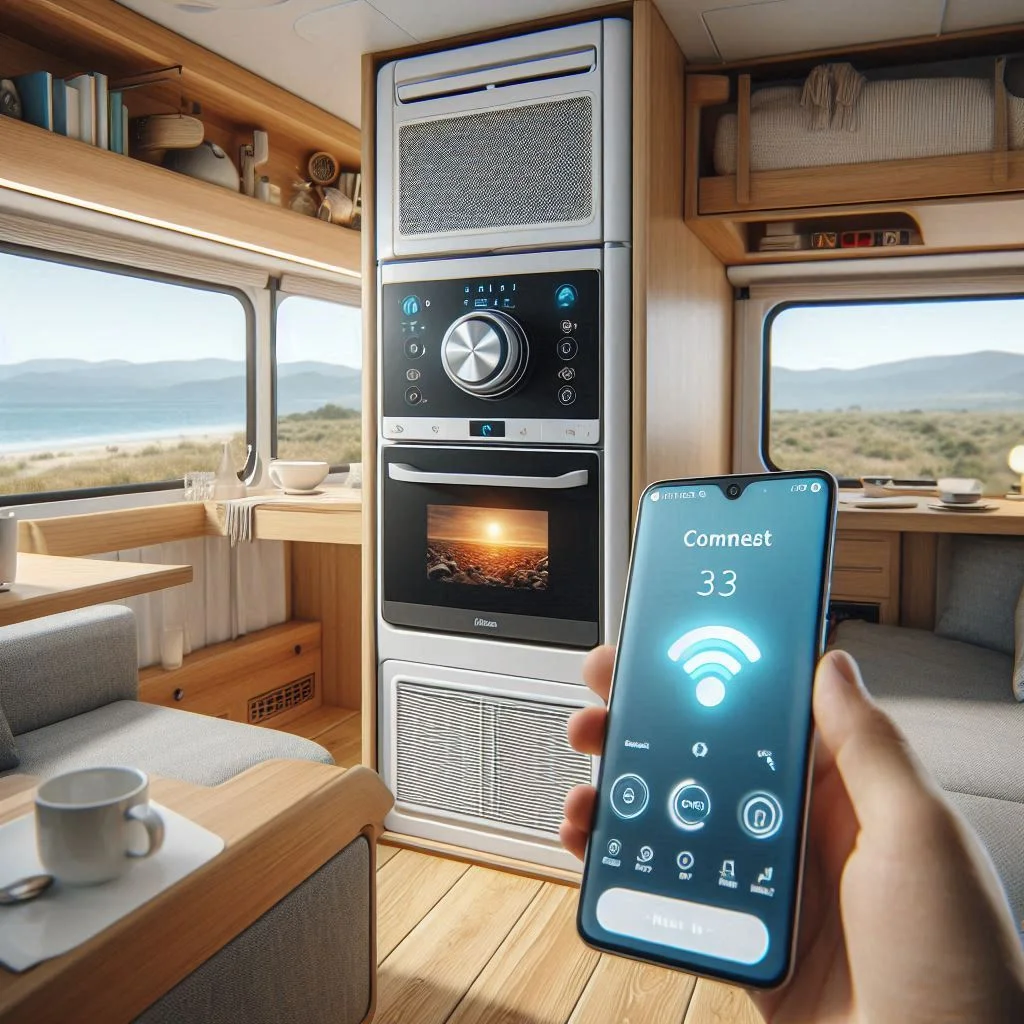
Powering and Maintaining Your Camper Van Air Conditioner
Ensuring your camper van air conditioner operates efficiently requires a combination of effective power solutions and regular maintenance. This section explores powering your air conditioner using solar panels, estimating energy needs, and maintaining your unit for optimal performance.
Powering via Solar Panels
Harnessing solar energy is an eco-friendly and efficient way to power your camper van air conditioner.
- Benefits of Solar Panels:
- Renewable energy source, reducing reliance on traditional power outlets.
- Cost-effective in the long run with minimal operational costs.
- Quiet operation, perfect for peaceful camping locations.
- Requirements for Solar-Powered Air Conditioning:
- Solar Panel Size: For a 12,000 BTU air conditioner, you’ll need approximately 800–1,200 watts of solar panels.
- Battery Bank: Lithium-ion batteries are recommended for storing solar energy efficiently.
- Inverter: A pure sine wave inverter is essential for converting DC to AC power.
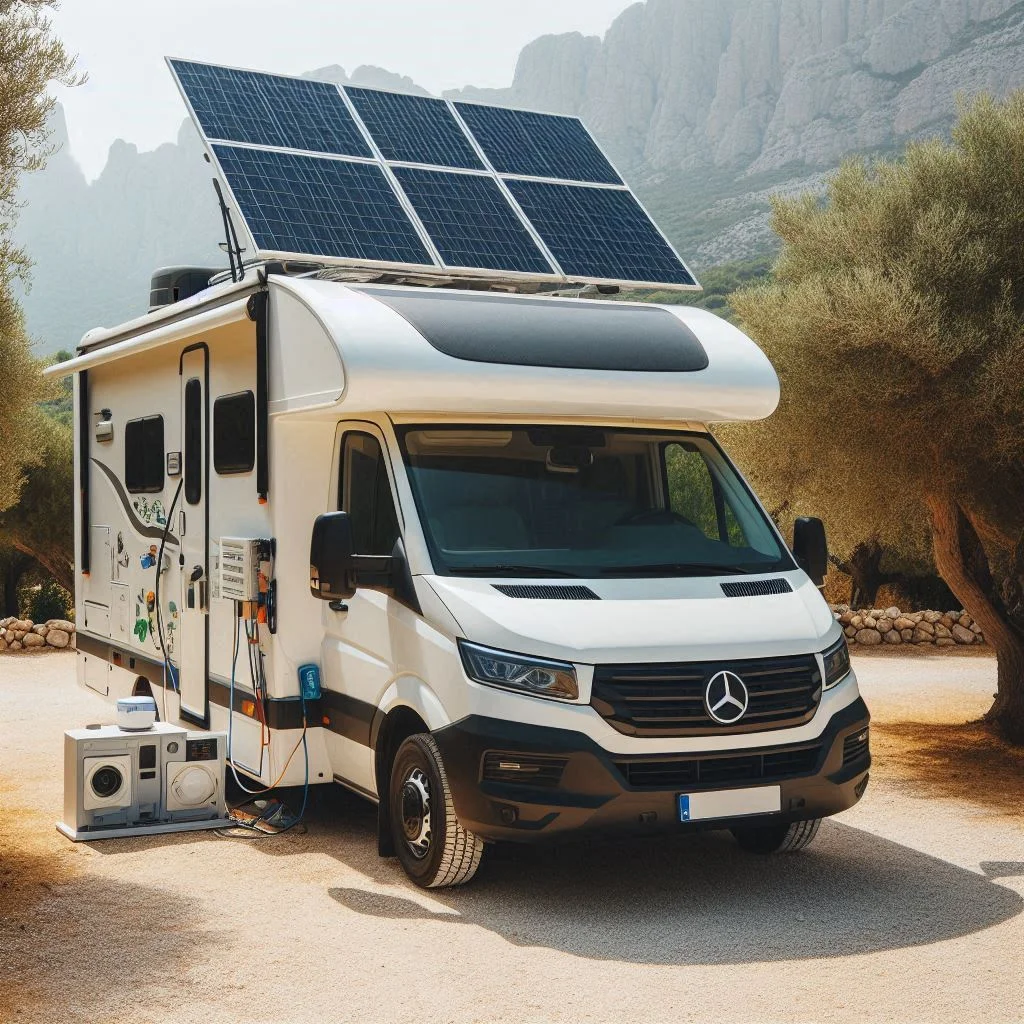
Estimating Power Usage and Battery Requirements
Accurate estimation of power usage and battery needs ensures uninterrupted air conditioning.
- Calculating Power Requirements:
- BTU to Watts Conversion: Use the formula Watts=BTU3.412\text{Watts} = \frac{\text{BTU}}{3.412}Watts=3.412BTU. For example, a 10,000 BTU unit requires approximately 2,930 watts.
- Operating Hours: Multiply the unit’s wattage by the hours you plan to run it daily.
- Battery Sizing:
- To calculate battery size, divide the total daily power consumption by the voltage of your battery system (e.g., 12V or 24V).
- Include a safety margin of 20–30% for unexpected power needs.

Routine Maintenance Tips
Regular maintenance extends the life of your air conditioner and ensures efficient cooling.
- Cleaning Filters:
- Check and clean filters every 2–4 weeks to prevent clogs.
- Replace filters as per the manufacturer’s recommendations.
- Inspecting Vents and Ducts:
- Ensure vents are free of obstructions to allow optimal airflow.
- Clean ducts to prevent dust buildup.
- Checking Refrigerant Levels:
- Low refrigerant can reduce cooling efficiency; recharge it if needed.
- Seek professional help for handling refrigerants safely.
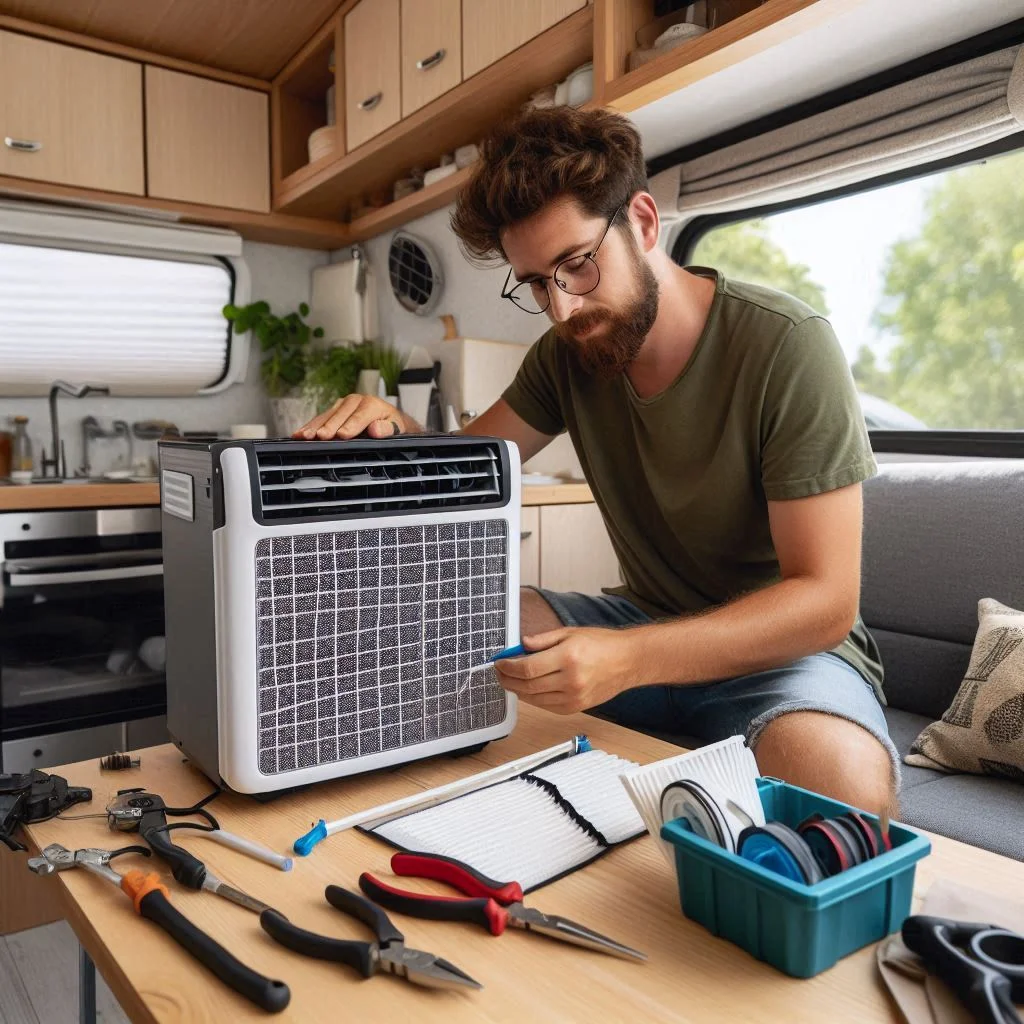
Troubleshooting Common Issues
Addressing common problems promptly can prevent costly repairs.
- Air Conditioner Not Cooling:
- Check power connections and reset the circuit breaker if necessary.
- Clean or replace dirty filters that may block airflow.
- Excessive Noise:
- Tighten loose components and ensure the unit is on a stable surface.
- Inspect the fan motor for wear and tear.
- Water Leaks:
- Empty the condensation tank or check if the drain hose is blocked.
- Unit Not Turning On:
- Verify battery charge levels and inspect the inverter for issues.
- Test the power outlet with another appliance to rule out connection problems.
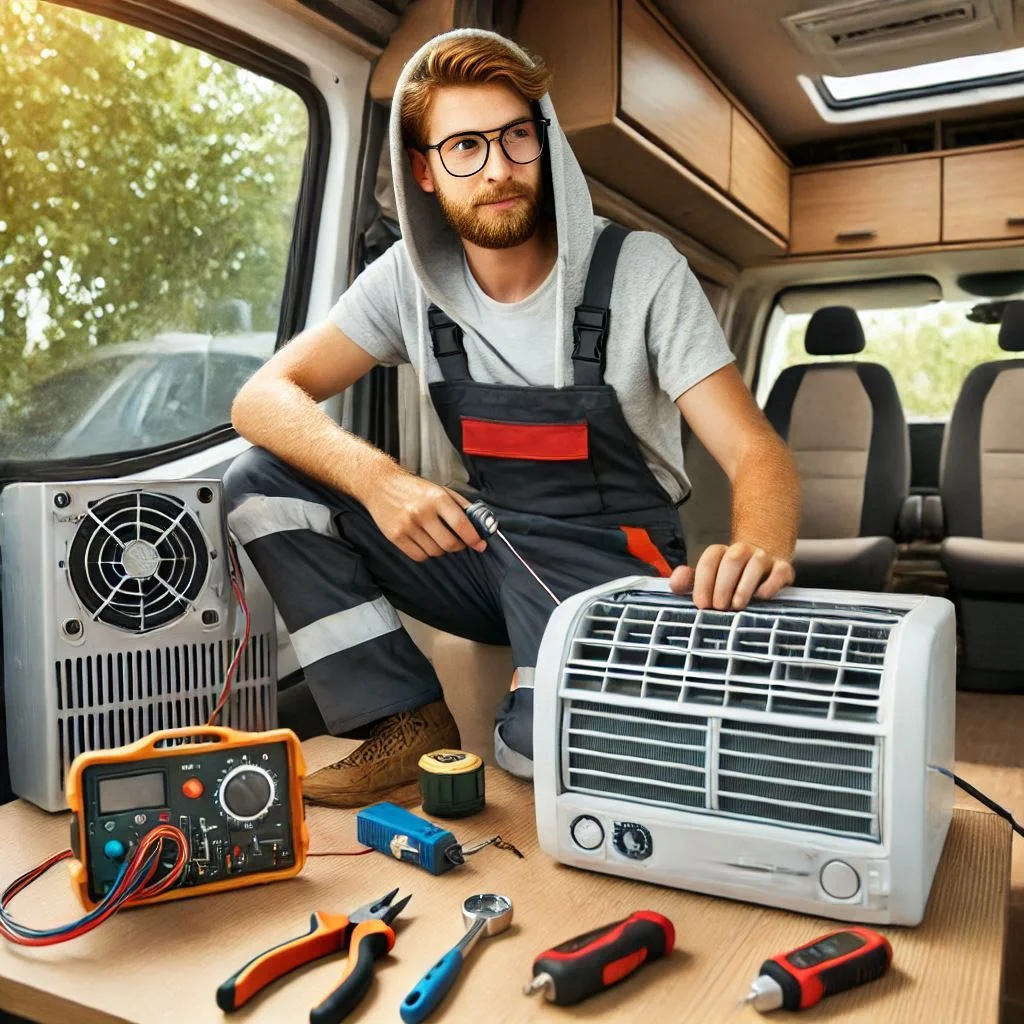
Tips to Keep Your Camper Van Cool
Creating a comfortable and cool environment in your camper van is essential, especially during hot summer days. By using proper ventilation, effective insulation, and reflective covers, you can maintain a pleasant interior temperature while conserving energy.
Proper Ventilation Techniques
Ventilation is critical for expelling hot air and maintaining airflow in your camper van.
- Strategically Placed Vents:
- Install roof vents or exhaust fans to expel hot air.
- Position intake vents near the floor to draw in cooler air.
- Cross Ventilation:
- Open windows or doors on opposite sides of the van to create a natural cross-breeze.
- Use mesh screens to keep bugs out while maintaining airflow.
- Ventilation Fans:
- Add a 12V-powered fan to increase airflow efficiency, especially in still air conditions.
- Opt for fans with reversible modes to either push out hot air or pull in cool air.
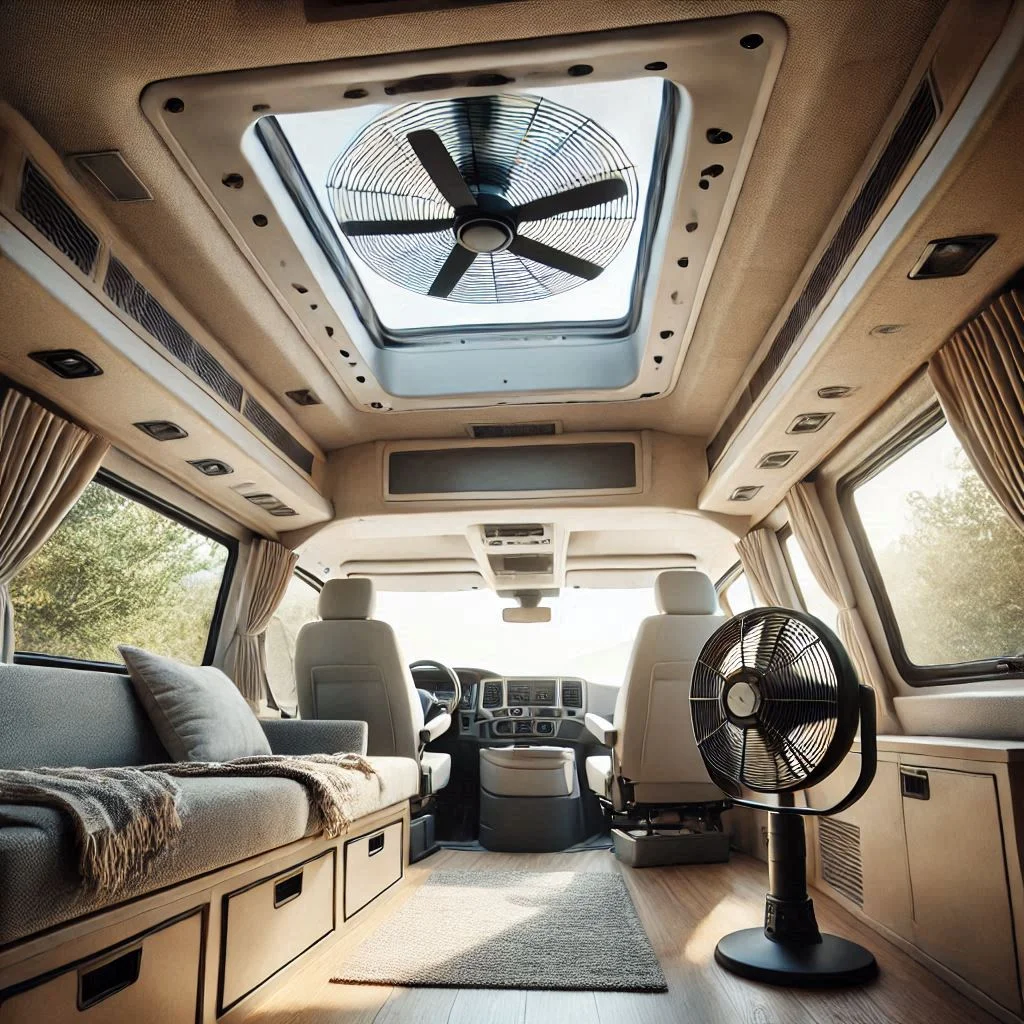
Insulating Your Camper Van
Insulation is key to minimizing heat transfer and keeping the interior cool.
- Types of Insulation Materials:
- Reflective Foam Panels: Great for reflecting radiant heat.
- Spray Foam Insulation: Seals gaps and provides excellent thermal resistance.
- Sheep Wool Insulation: A sustainable option that regulates temperature effectively.
- Insulation Techniques:
- Insulate walls, floors, and ceilings with high-quality materials to block external heat.
- Cover metal surfaces, which can quickly heat up under the sun.
- Use thermal tape to seal gaps and prevent air leaks.
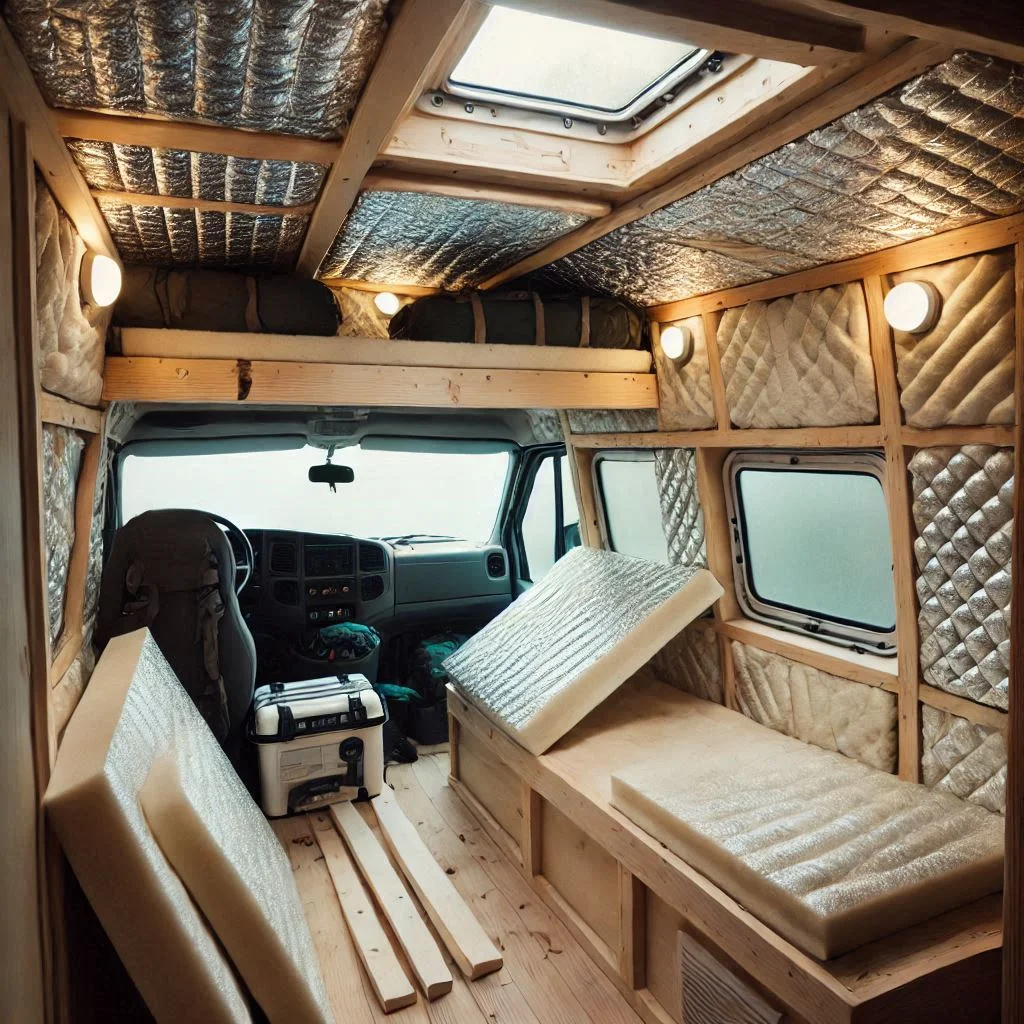
Using Reflective Covers and Curtains
Reflective covers and insulated curtains play a vital role in reducing the heat entering your camper van.
- Reflective Windshield Covers:
- Use sunshades or covers made with reflective materials to block direct sunlight through the windshield.
- Reflective covers can reduce interior temperatures by several degrees.
- Thermal Curtains or Blackout Shades:
- Install curtains with a reflective layer to block sunlight while maintaining privacy.
- Blackout shades help regulate interior temperatures during the day and night.
- Covering Skylights and Windows:
- Attach magnetic or Velcro reflective covers to skylights and side windows for easy removal.
- Ensure covers are lightweight and foldable for convenient storage.
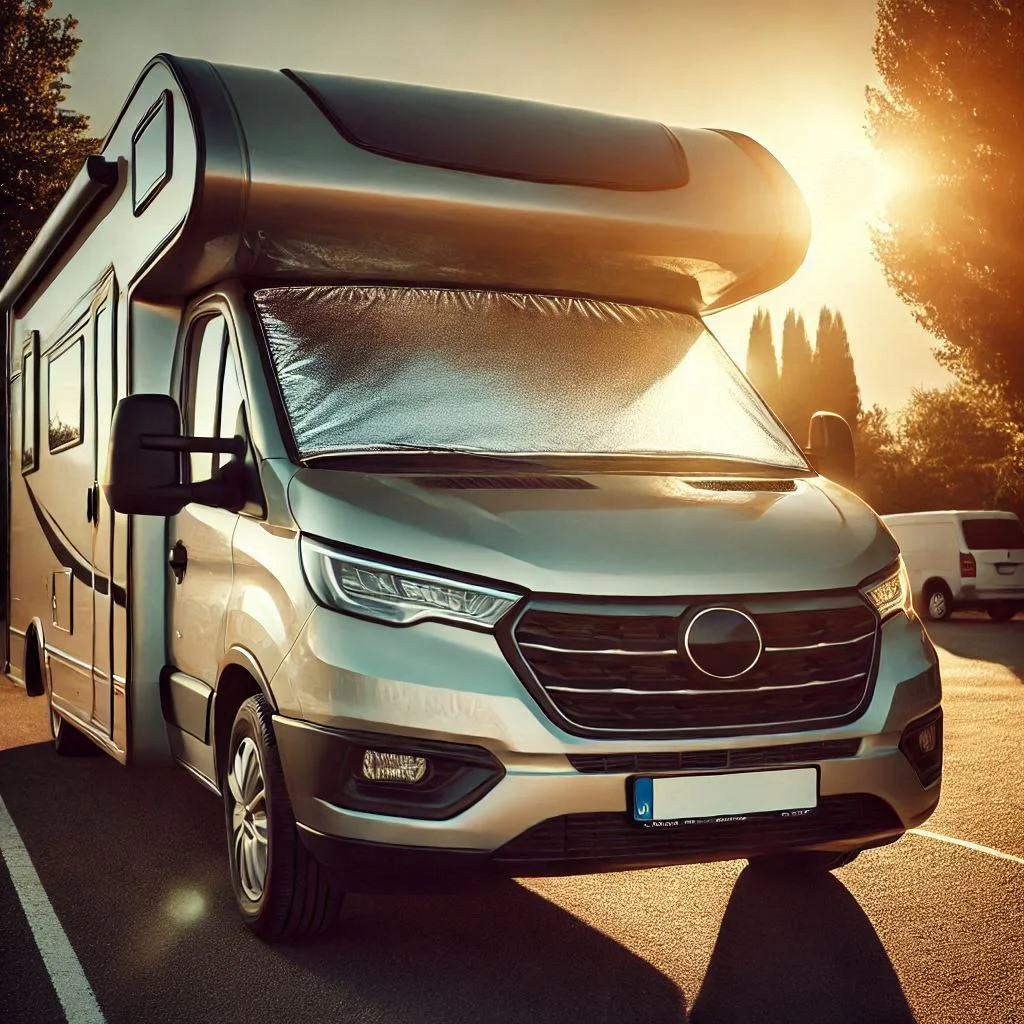
Best Time to Buy and Budgeting for a Camper Van Air Conditioner
Purchasing the right air conditioner for your camper van involves careful planning, understanding price trends, and evaluating features within your budget. With strategic timing and smart budgeting, you can make an informed decision that balances cost and performance.
Understanding Price Ranges
The cost of camper van air conditioners can vary widely based on their type, features, and brand.
- Entry-Level Units:
- Price Range: $200–$500
- Features: Basic cooling capabilities, lower BTU ratings (ideal for smaller vans).
- Ideal For: Budget-conscious buyers with minimal cooling needs.
- Mid-Range Units:
- Price Range: $500–$1,000
- Features: Enhanced efficiency, better durability, and higher BTU ratings.
- Ideal For: Medium-sized camper vans or frequent travelers.
- High-End Units:
- Price Range: $1,000–$3,000
- Features: Advanced features like inverter technology, dual-function heating and cooling, and ultra-quiet operation.
- Ideal For: Luxury campers and extreme weather conditions.
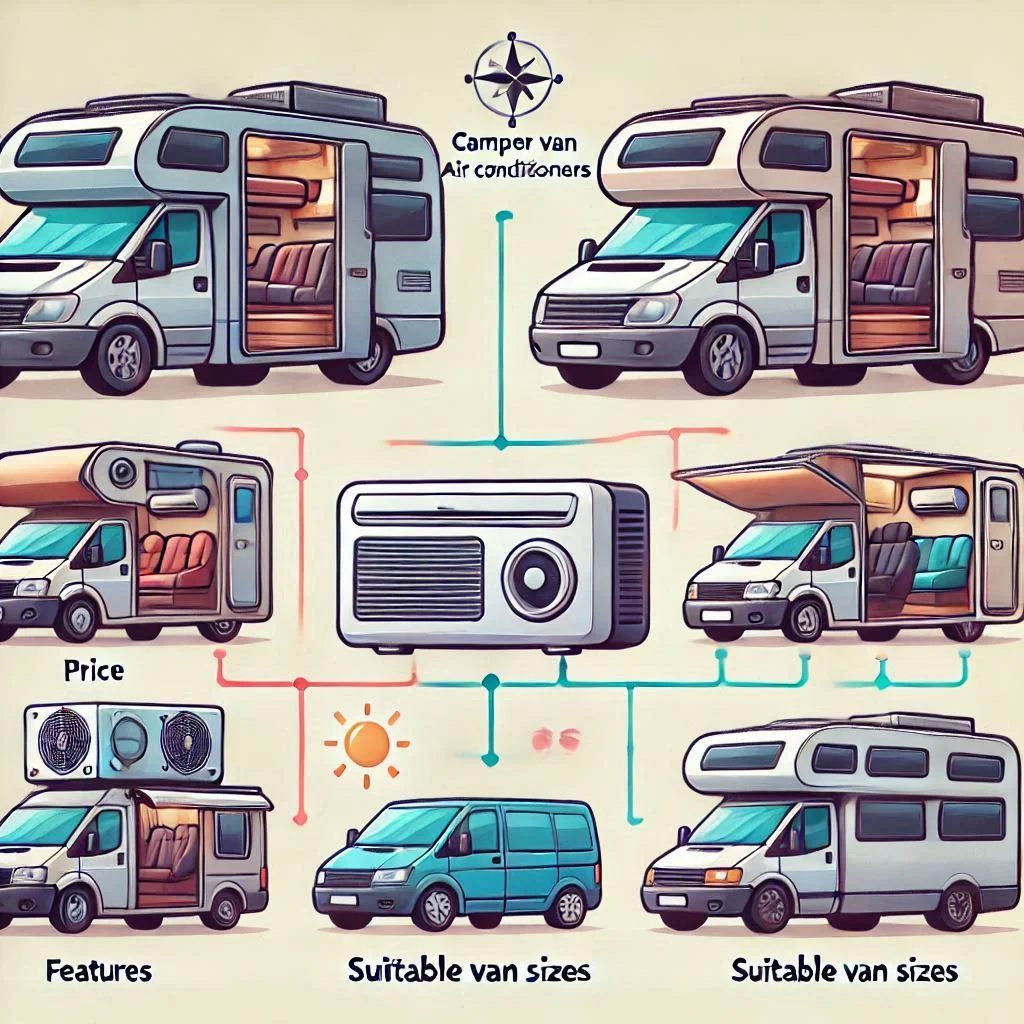
Seasonal Sales and Deals
Timing your purchase can significantly reduce costs.
- Off-Season Discounts:
- The best deals are often available during the fall and winter months when demand for air conditioners is lower.
- Many retailers offer clearance sales to make room for new inventory.
- Holiday Sales:
- Watch for discounts during Black Friday, Cyber Monday, and end-of-year sales events.
- Some manufacturers also offer rebates or bundle deals during these periods.
- Trade Shows and Expos:
- RV and camper van expos often feature exclusive discounts on air conditioning units.
- You may also gain access to expert advice and demonstrations.
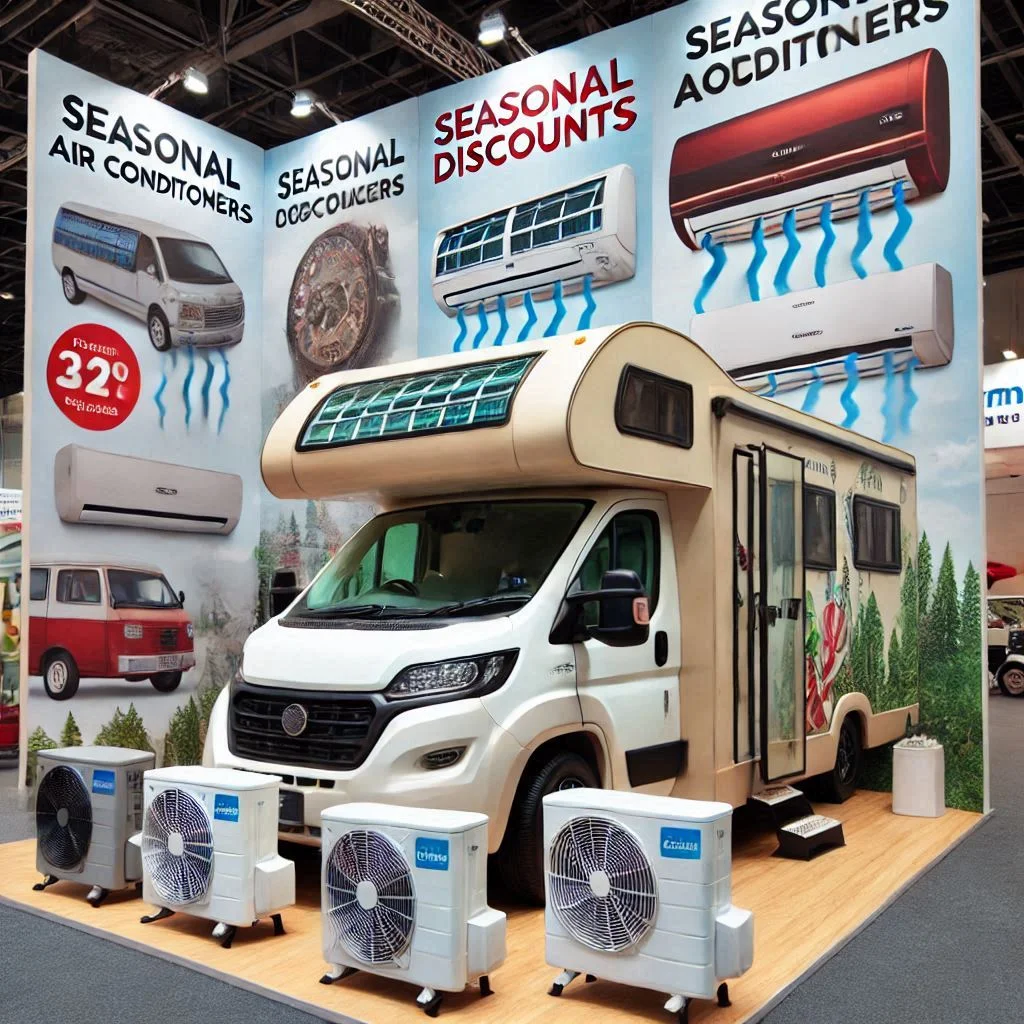
Balancing Features with Budget
Finding the right air conditioner means evaluating its features to ensure they align with your needs and budget.
- Must-Have Features for Budget Buyers:
- Adequate BTU rating for your camper van size.
- Energy efficiency to reduce operating costs.
- Compact design for easy installation.
- Investing in Premium Features:
- Inverter technology for consistent cooling with reduced power consumption.
- Dual-functionality (heating and cooling) for year-round use.
- Noise reduction features for a quieter experience.
- DIY vs. Professional Installation:
- Save money by choosing a unit designed for easy DIY installation.
- Consider professional installation for complex units or if modifications to your camper van are required.
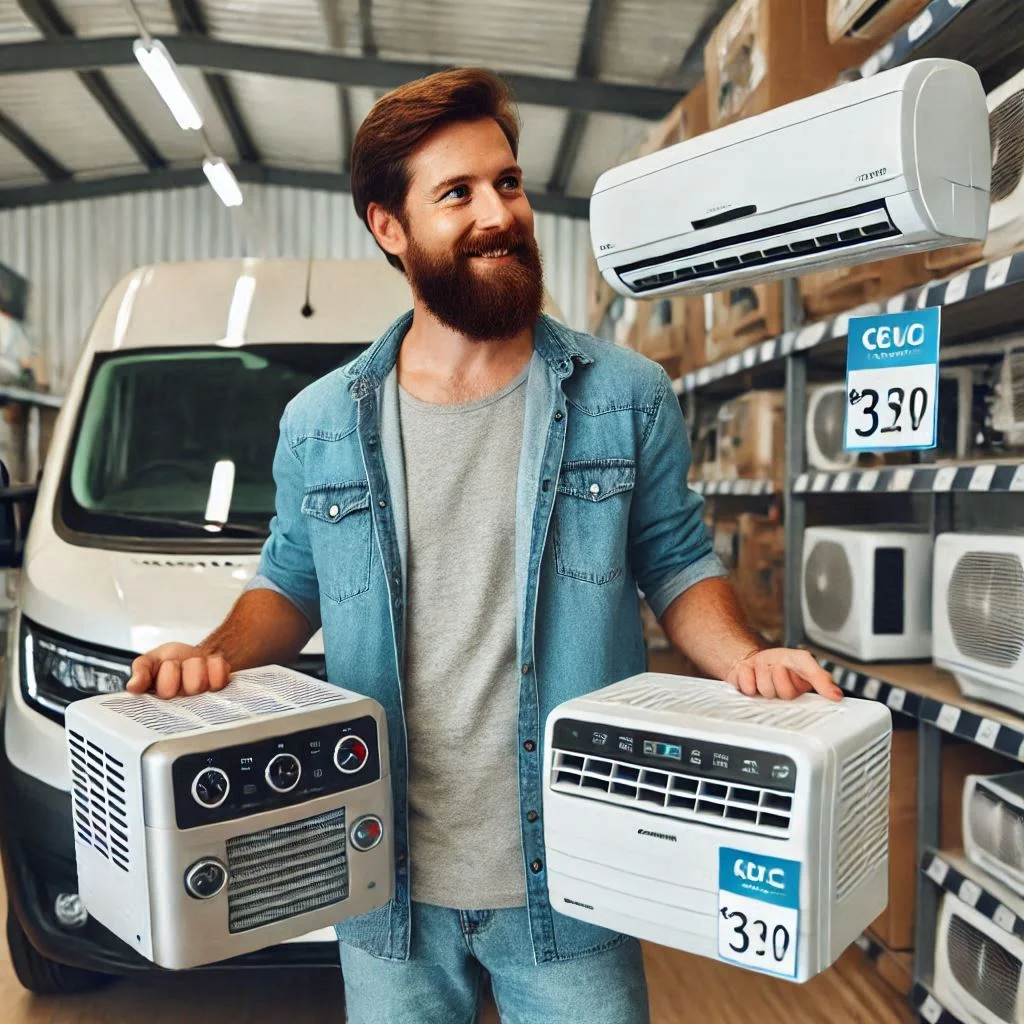
FAQs: Best Portable Air Conditioner for Camper Van
Choosing the right portable air conditioner for your camper van can be a daunting task. These frequently asked questions address common concerns to help you make an informed decision.
What is the best portable air conditioner for a camper van?
The best portable air conditioner for a camper van depends on your specific needs, including van size, power availability, and budget.
- Whynter Elite ARC-122DS: A dual-hose unit with 12,000 BTU, perfect for medium to large camper vans.
- LG LP0621WSR: A compact, energy-efficient model suitable for smaller spaces.
- Homelabs Portable Air Conditioner: Known for its quiet operation and high cooling capacity.
When selecting a portable air conditioner, prioritize energy efficiency, portability, and ease of installation.
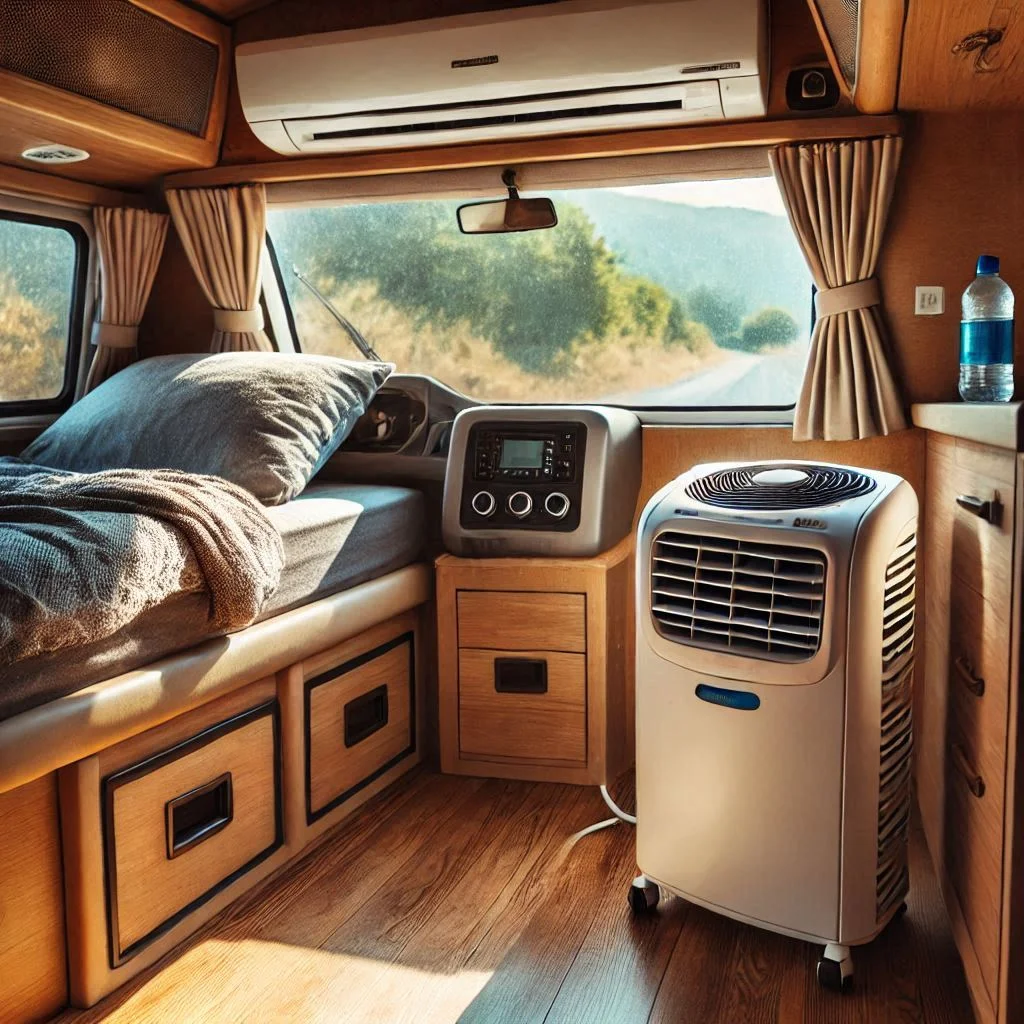
Can a portable air conditioner cool an entire camper van?
Yes, but the effectiveness depends on the unit’s BTU rating and the van’s insulation.
- BTU Rating:
- Choose a unit with a BTU rating that matches the size of your camper van. For example, 8,000–12,000 BTU is ideal for most standard vans.
- Insulation:
- Proper insulation ensures that the cooled air stays inside, making the air conditioner more effective.
For larger vans or extreme heat conditions, consider using reflective covers and fans to supplement the cooling.
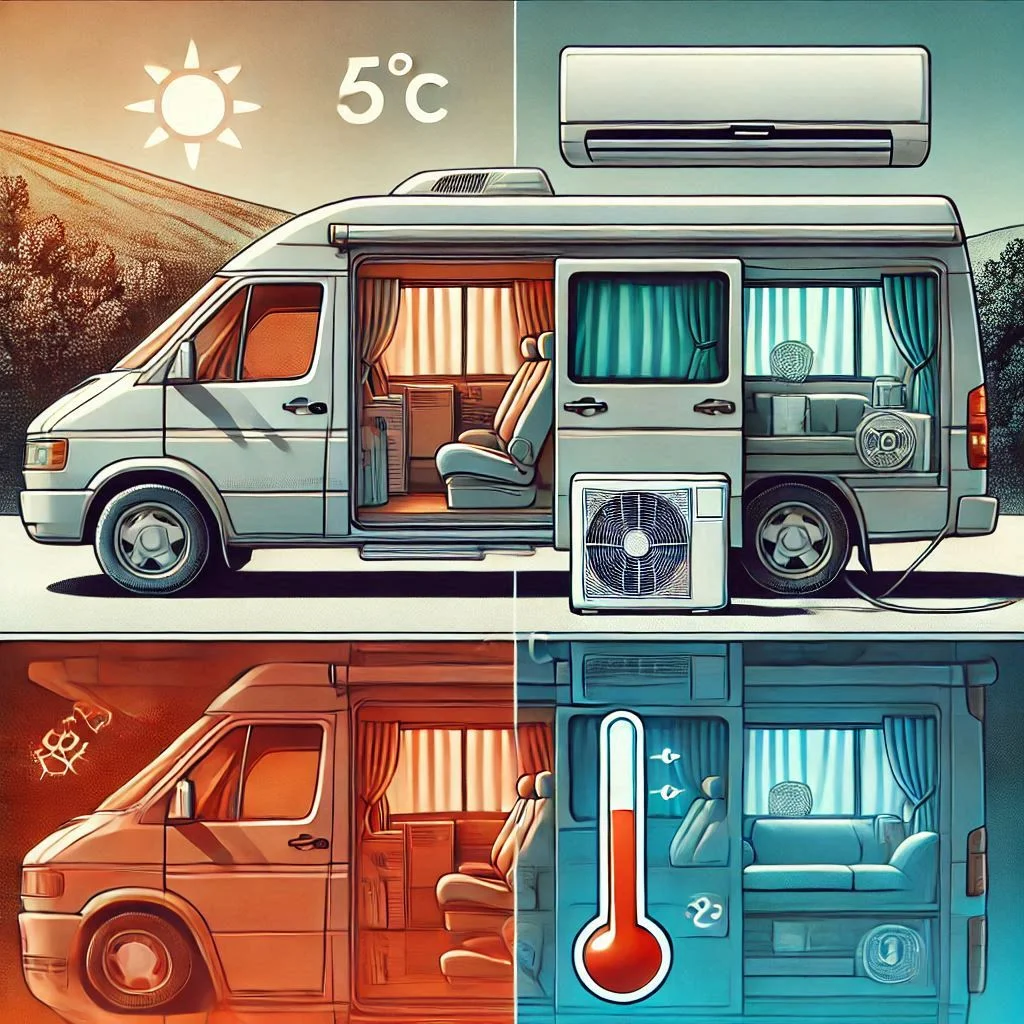
How do I power a portable air conditioner in a camper van?
Powering a portable air conditioner in a camper van typically involves one of these methods:
- Shore Power: Plug your camper van into an external power source at campsites or RV parks.
- Generator: Use a portable generator to provide the necessary wattage for the air conditioner.
- Battery and Inverter Setup:
- A deep-cycle battery paired with an inverter can run a portable air conditioner.
- For extended use, pair the battery system with solar panels for sustainable energy.
Tip: Calculate the air conditioner’s wattage requirements and ensure your power source can handle the load.
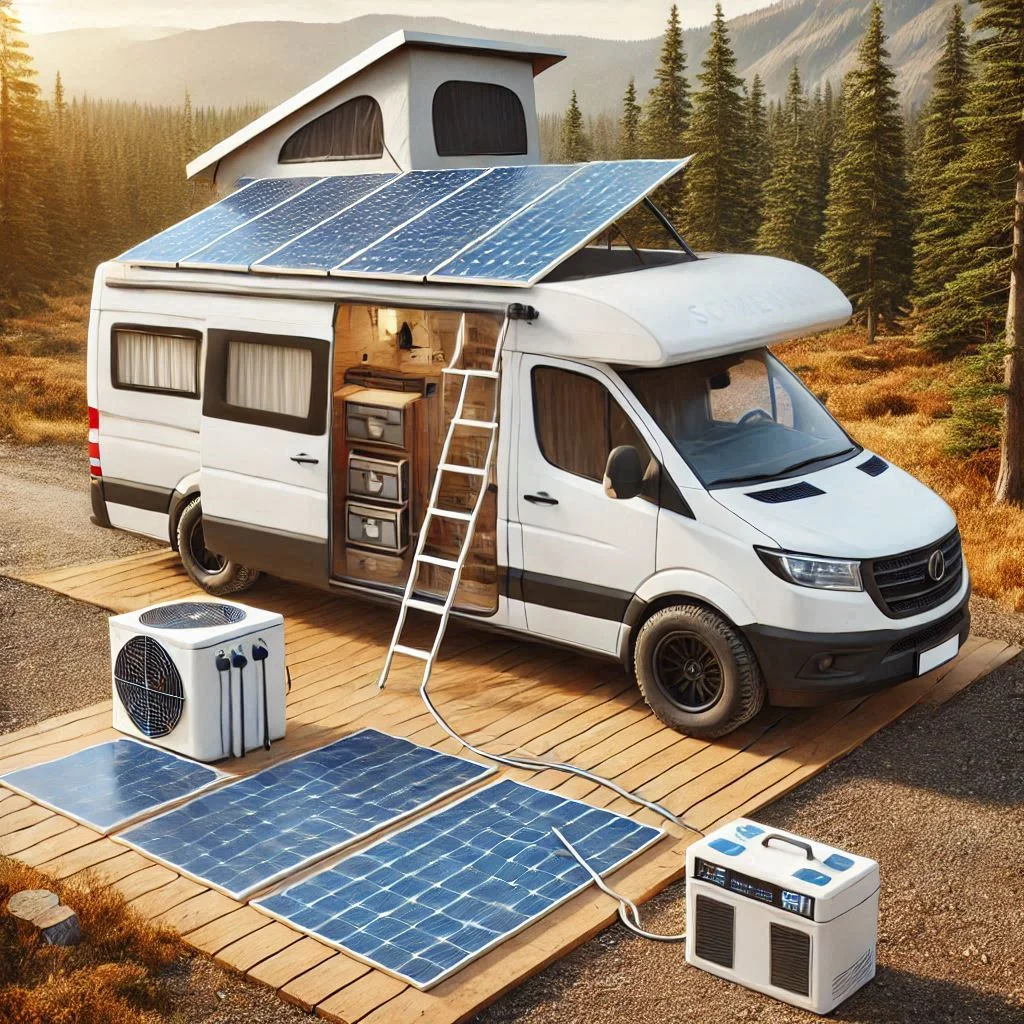
Are portable air conditioners noisy?
Portable air conditioners do produce some noise, but the level varies by model.
- Quiet Models: Units like the Homelabs Portable Air Conditioner and De’Longhi Pinguino PACEX390LVYN are designed for minimal noise, making them ideal for nighttime use.
- Noise Level Measurement: Look for models with a noise rating below 55 decibels (dB) for quieter operation.
- Placement Tips: Position the air conditioner away from sleeping areas and use noise-dampening mats if needed.
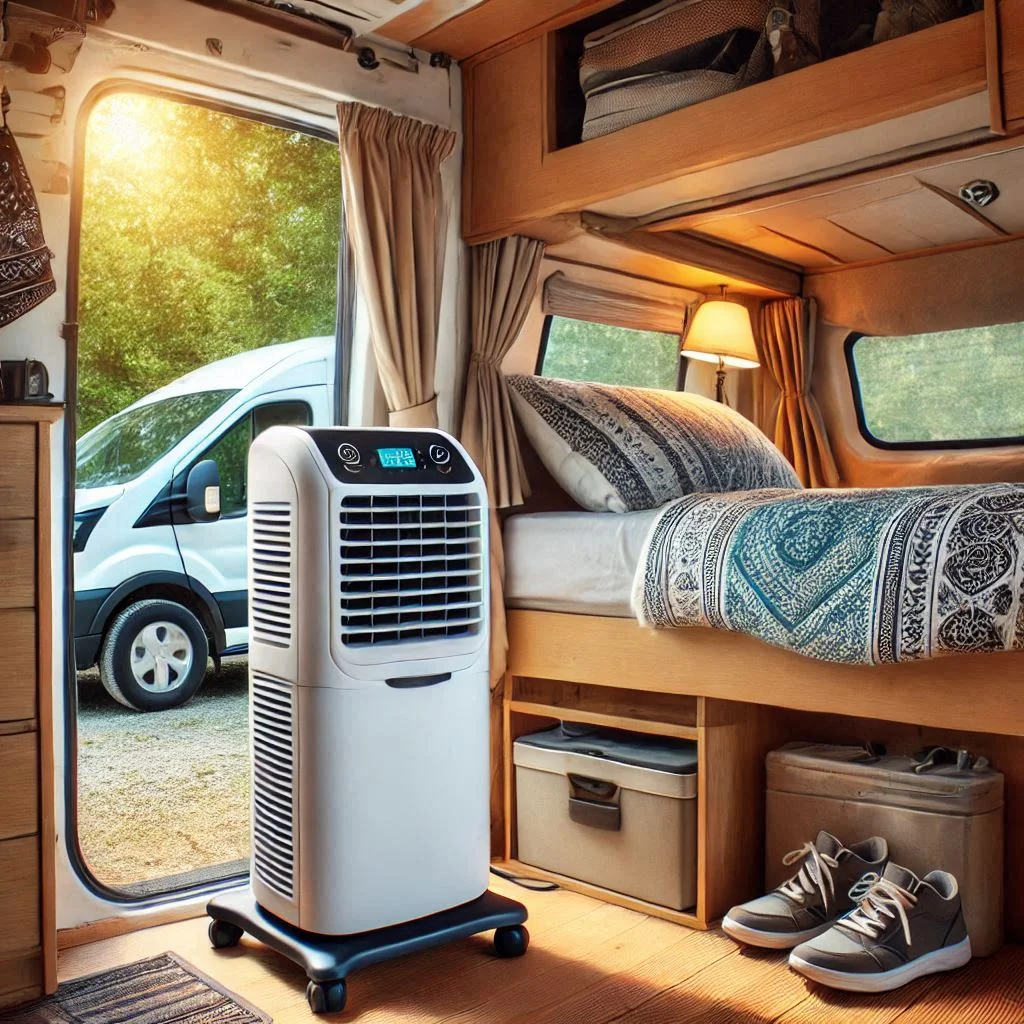
Should I consider a 12V air conditioner for my camper van?
Yes, a 12V air conditioner is an excellent option for camper vans, especially for off-grid travelers.
- Advantages of 12V Units:
- Runs directly on the van’s battery or a solar setup.
- Energy-efficient and ideal for long-term use.
- Comparison with Portable Units:
- While 12V units are quieter and more compact, they may have lower cooling capacities compared to traditional portable air conditioners.
- Top Choices: Look for models like the Nomadic Cooling X2 or B-Cool 12000RV for powerful yet efficient cooling.
Tip: Consider a 12V unit if your van setup prioritizes sustainability and energy efficiency.
Conclusion
Finding the best portable air conditioner for your camper van is key to ensuring a comfortable and enjoyable journey, no matter where your travels take you. By understanding the different types of air conditioners, evaluating key factors like cooling capacity, efficiency, and noise levels, and exploring power and maintenance options, you can choose a unit that perfectly suits your needs. Whether you’re staying cool with a Whynter Elite ARC-122DS, powering your system with solar panels, or optimizing your camper van’s insulation, every step enhances your van life experience. Don’t forget to take advantage of seasonal sales and budget wisely to invest in a reliable air conditioning solution. With the right unit, thoughtful setup, and proactive maintenance, your camper van can be a haven of comfort even on the hottest days. Embrace the road ahead with confidence and keep cool as you explore new adventures.

